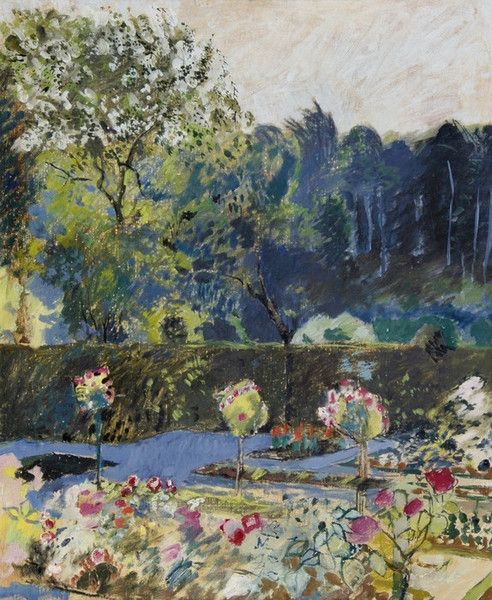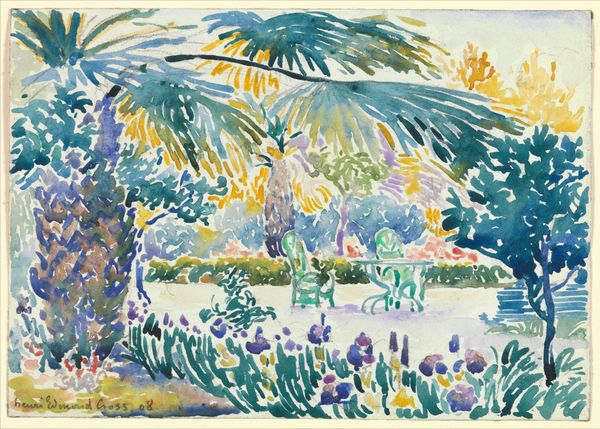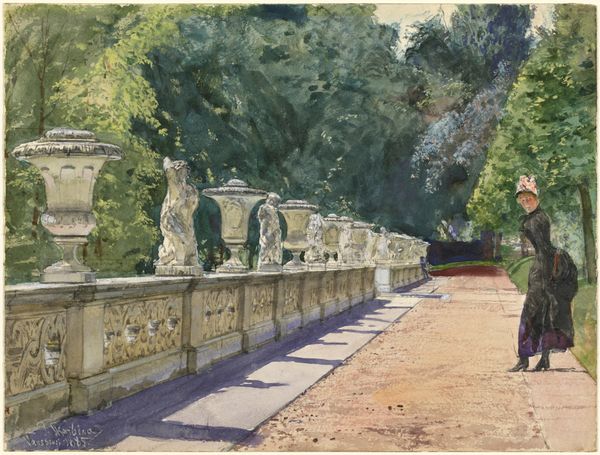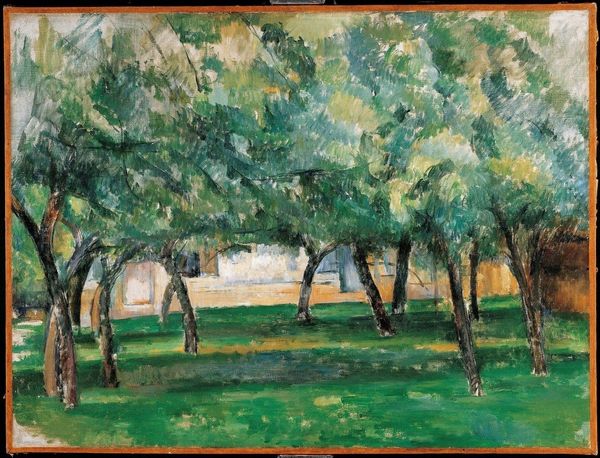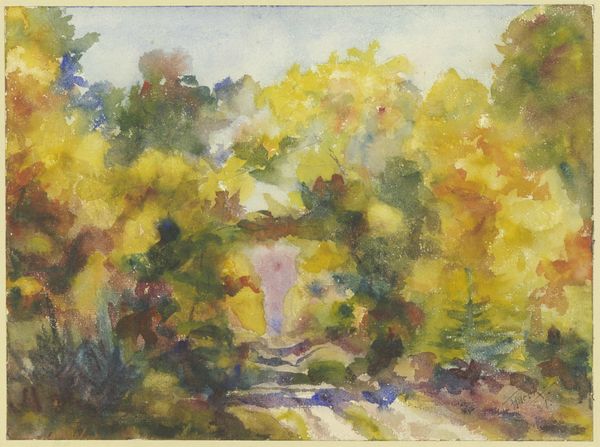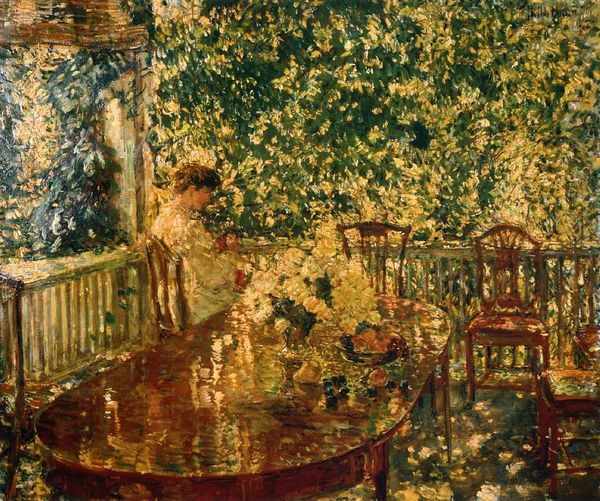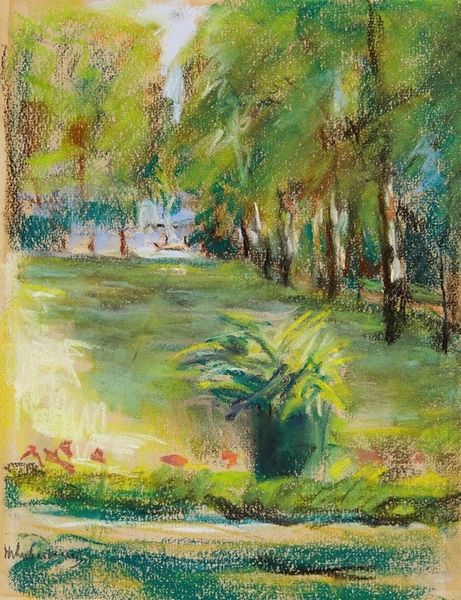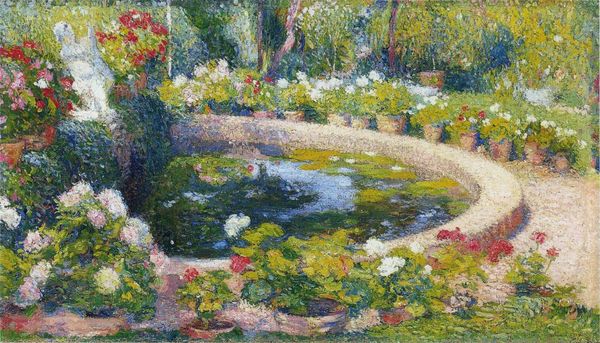
Copyright: Public Domain: Artvee
Editor: Here we have John Singer Sargent's "Villa di Marlia, Lucca; A Fountain" from 1910. It looks to be done in watercolor and captures a sun-drenched Italian garden. The lemon tree is just gorgeous! What strikes you about this piece? Curator: I'm particularly interested in Sargent’s use of watercolor here. It was a commercially available material, cheap and easily portable, enabling the rapid creation of images. Think about the social context: affluent tourists desiring souvenirs of their travels. Sargent, a sophisticated artist, engages with and elevates this medium, traditionally associated with amateur practice. Editor: That’s a great point about watercolor being accessible. Does that make his work here more… democratic, in a way? Curator: Perhaps. Though, who was buying these watercolors? Not the masses. But consider the labor involved: quick, plein-air sketches, suggesting immediacy and effortless skill. But, of course, these works required a significant investment of time, technique, and training, disguising labor for bourgeois consumption. How does the handling of the water effect our perception of subject matter and style? Editor: It makes it feel very alive, like the water is constantly moving and the leaves are rustling. You can almost feel the warmth. Curator: Precisely. Now think about the fountains and the fruit trees. This isn’t just a depiction of nature, but a carefully cultivated landscape, a signifier of wealth and taste available to purchase and hang in a drawing room. It collapses a sense of place with commodification. Editor: I never considered it that way, it definitely reframes how I see the artwork! Thanks for that insight. Curator: My pleasure. I find considering materiality offers new perspectives and shifts understanding of intention.
Comments
No comments
Be the first to comment and join the conversation on the ultimate creative platform.



